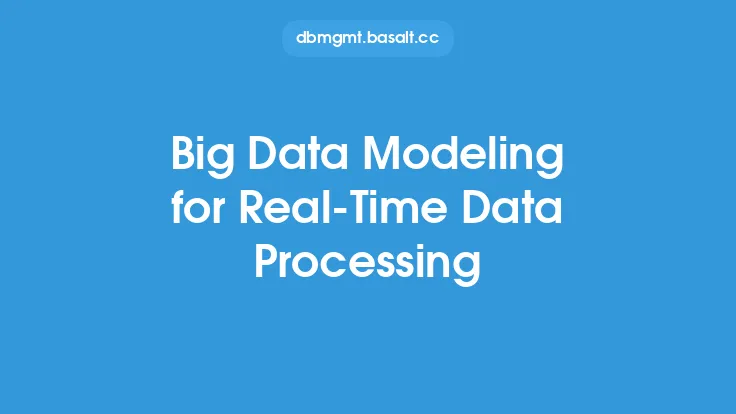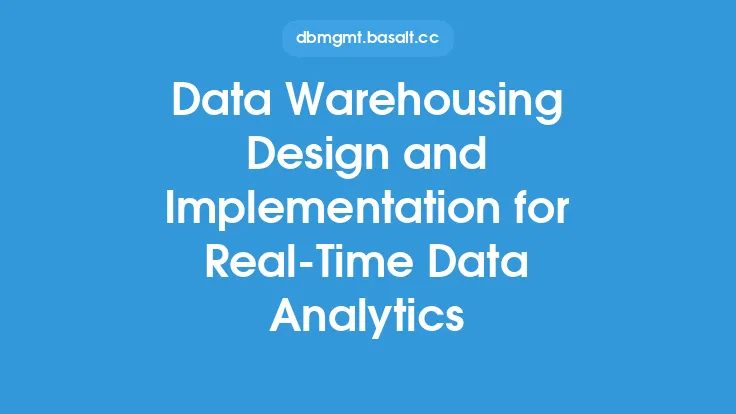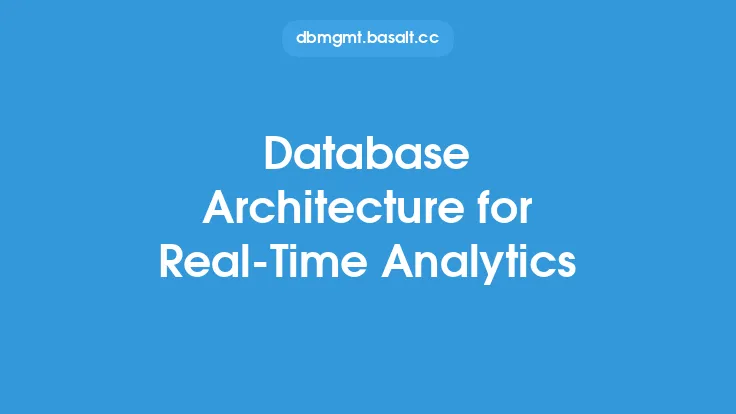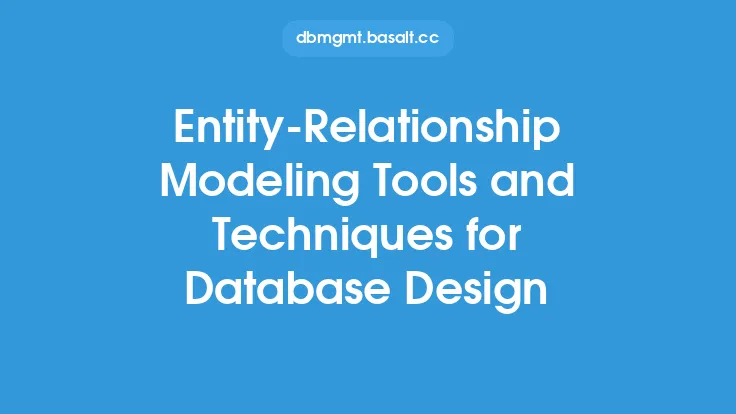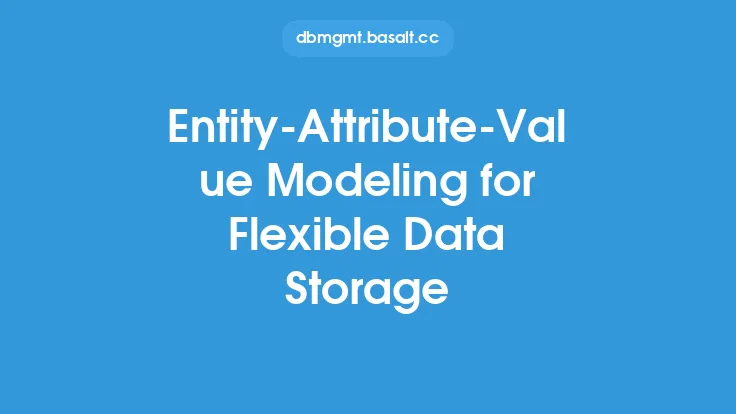Temporal data modeling is a crucial aspect of data modeling that deals with the representation of time-based data in a database. It involves designing a data model that can effectively store, manage, and analyze data that varies over time. Time-based analytics is a key application of temporal data modeling, as it enables organizations to analyze and understand how their data changes over time, identify trends, and make informed decisions.
Introduction to Temporal Data Modeling
Temporal data modeling is based on the concept of time, which is a fundamental aspect of many business applications. It involves modeling data that has a temporal component, such as sales data, stock prices, or weather data. The goal of temporal data modeling is to design a data model that can accurately represent the temporal relationships between data entities and support time-based analytics.
Types of Temporal Data
There are several types of temporal data, including:
- Valid time: This refers to the time period during which a fact is true. For example, a customer's address is valid from a certain date to another date.
- Transaction time: This refers to the time at which a fact is recorded in the database. For example, a sales transaction is recorded at a certain time.
- System time: This refers to the time at which a fact is current in the database. For example, a customer's current address is stored in the database.
Temporal Data Modeling Techniques
There are several techniques used in temporal data modeling, including:
- Time stamping: This involves adding a time stamp to each fact to indicate when it was recorded.
- Time intervals: This involves representing time as a series of intervals, such as days, weeks, or months.
- Time dimensions: This involves creating a separate dimension for time, which can be used to analyze data over time.
Designing a Temporal Data Model
Designing a temporal data model involves several steps, including:
- Identifying temporal entities: This involves identifying the entities that have a temporal component, such as customers, orders, or products.
- Defining temporal attributes: This involves defining the attributes that are relevant to the temporal entities, such as valid time, transaction time, or system time.
- Creating temporal relationships: This involves creating relationships between the temporal entities, such as a customer's address history.
- Defining temporal granularity: This involves defining the level of detail at which time is represented, such as days, weeks, or months.
Implementing a Temporal Data Model
Implementing a temporal data model involves several steps, including:
- Choosing a database management system: This involves choosing a database management system that supports temporal data modeling, such as Oracle or SQL Server.
- Designing temporal tables: This involves designing tables that can store temporal data, such as a customer's address history.
- Creating temporal indexes: This involves creating indexes that can support temporal queries, such as a index on a date column.
- Writing temporal queries: This involves writing queries that can analyze temporal data, such as a query to retrieve a customer's address history.
Best Practices for Temporal Data Modeling
There are several best practices for temporal data modeling, including:
- Use a consistent time zone: This involves using a consistent time zone throughout the database to avoid confusion.
- Use a standard date format: This involves using a standard date format, such as ISO 8601, to ensure consistency.
- Avoid using ambiguous dates: This involves avoiding the use of ambiguous dates, such as 02/03/2022, which can be interpreted as either February 3, 2022, or March 2, 2022.
- Use temporal data types: This involves using temporal data types, such as DATE or TIMESTAMP, to ensure that temporal data is stored accurately.
Common Challenges in Temporal Data Modeling
There are several common challenges in temporal data modeling, including:
- Handling time zones: This involves handling time zones, which can be complex and error-prone.
- Dealing with daylight saving time: This involves dealing with daylight saving time, which can cause clocks to spring forward or fall back.
- Handling missing or null dates: This involves handling missing or null dates, which can cause errors in temporal queries.
- Optimizing temporal queries: This involves optimizing temporal queries, which can be complex and resource-intensive.
Conclusion
Temporal data modeling is a critical aspect of data modeling that enables organizations to analyze and understand how their data changes over time. By using temporal data modeling techniques, such as time stamping, time intervals, and time dimensions, organizations can design a data model that can accurately represent temporal relationships and support time-based analytics. By following best practices, such as using a consistent time zone and avoiding ambiguous dates, organizations can ensure that their temporal data model is accurate and reliable.
